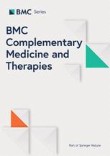
“Background: Cannabis use for tumor treatment has been explored in several areas, and its potential for tumor remission is currently being studied after the discovery of the endogenous cannabinoid.
Objective: The study aimed to conduct a critical patent review to identify and explore the latest advances and therapeutic strategies using cannabis to treat cancer.
Methods: The research was carried out in the free and online database Espacenet, using the descriptors “cancer” and “Cannabis or cannabidiol” in the title or abstract. A total of 95 patents were identified for preliminary evaluation in the database. Six duplicate patents were excluded, 12 referring to traditional Chinese medicine and 36 with a title in disagreement with the scope of this review. In addition the final selection involved 21 patents that were in line with the objective of the study.
Results: As observed in the reading of patents, the interest of pharmaceutical industries and researchers and the development of new products to fight cancer have increased in recent years. The main cannabinoids present in the patents are tetrahydrocannabinol, cannabidiol, and hemp. Moreover, the patents were classified and the main applicant countries were the United States followed by Japan, with a higher filing rate in 2019 and, mainly by the industry.
Conclusion: In conclusion we can say that, the importance of parliamentary approval in the cultivation and investments that, in addition to bringing innovation to the industrial sector, enriches research in the area, contributing to the creation of new medicines.”





